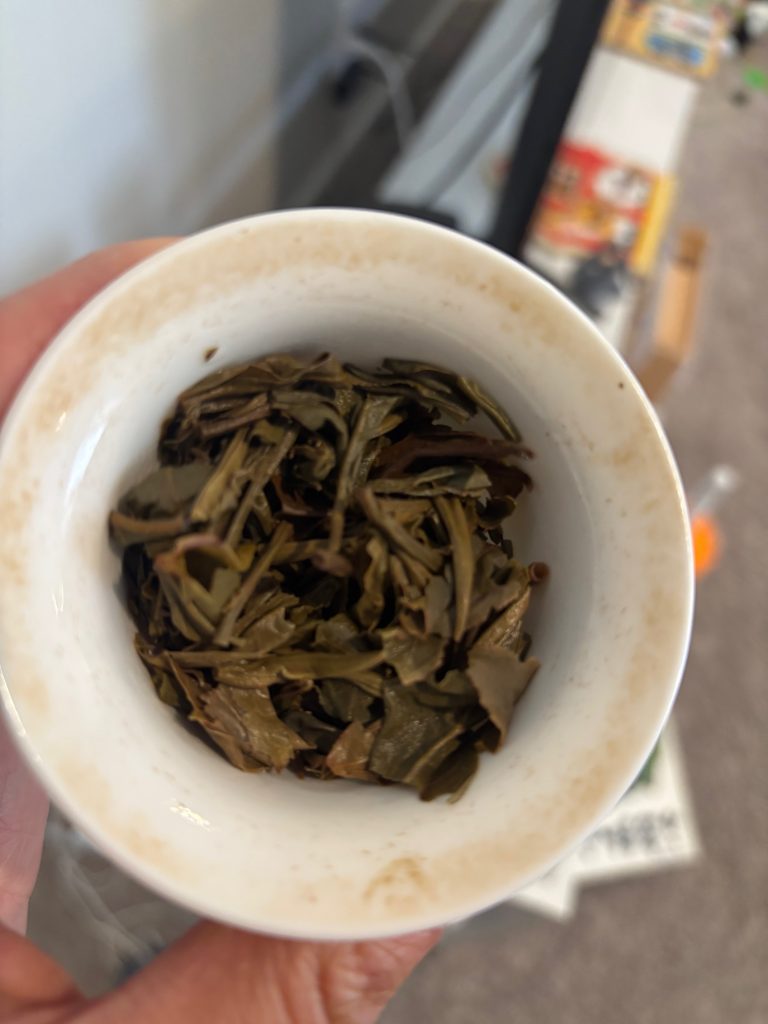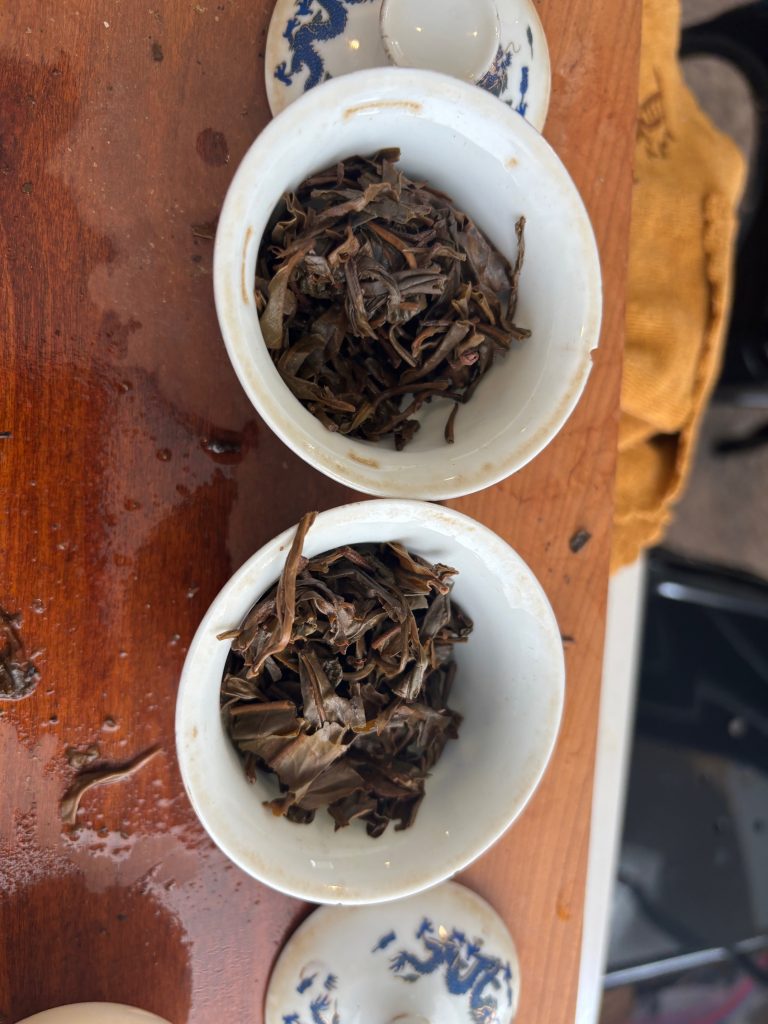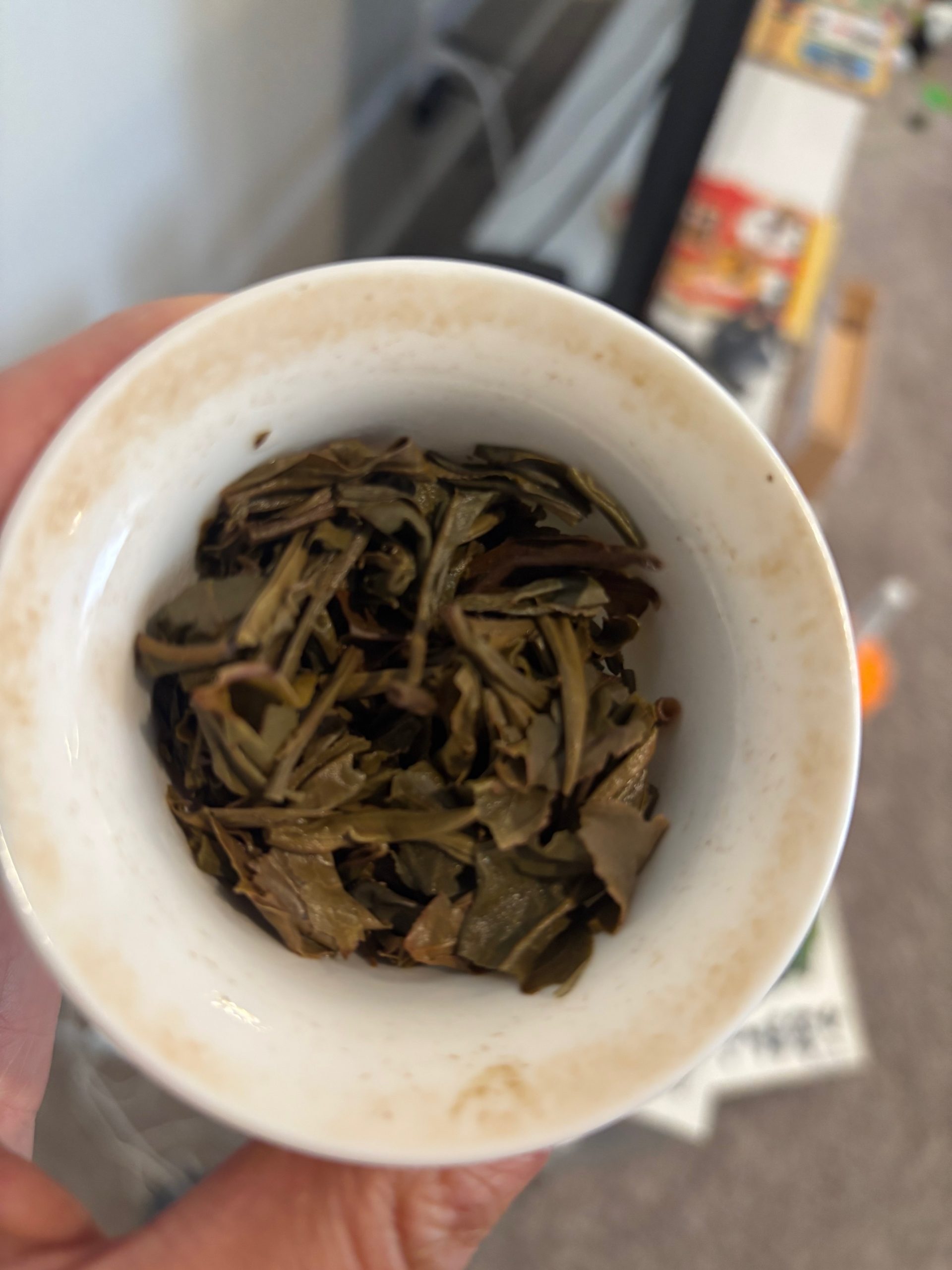Kunming storage has never been my preferred storage. In the scheme of pu’erh drinkers I’ve always been friendlier towards the danker side of storage.. As a result there are very few teas I own that have actually undergone a significant amount of Kunming storage. I wanted to revisit my long standing bias so I emailed the west’s most well known purveyor of Kunming stored teas, Scott (Yunnan Sourcing) for his recommendations.
Goals
- Determine my current opinions of Kunming storage and if I need to revise my previous storage preference. While I don’t own cakes of any of these teas I have tried five of the seven before.
- See how it compares with western storage, specifically my own. One reason I own so little Kunming is that I suspect my storage operates similarly and given my storage preferences it would take a very long time for a Kunming + Seattle combination to age.
- Tied with 2. But in the XG Masochist report I used a multiplier to determine relative biological age based off of where it was stored. Seattle was valued as half of Taiwan/Guangdong. The third goal is to evaluate and revise this.
- Scott’s recommendations leaned northern. A secondary goal is to see if my opinions on northern tea, which I tend to avoid, have changed now that they’ve gotten older.

Notes
2012 YS Nanpozhai
This starts out quite tasty, but very green tasting. Honey, acorn, nuts. It is also sturdy and oily. The bitterness does build and starts to take over the session. Some of it resolves nicely into a sweet aftertaste, while other parts linger. It is all still quite young tasting. I have had the 2013 before, and comparatively this is less floral but the notes line up generally, with just the very top notes being chopped off. There’s clearly good material here but the slower storage prevents makes it harder to tell what semi-aged profile it will eventually have.
2012 YS Xin Banzhang
Doesn’t start out too punchy, but steadily builds up steam. Acorn nuts, sugarcane. Nice strength and protracted mouthfeel. Bitterness crescendos in the middle steeps but does properly fade. It is thick, oily. Not changed or mellowed enough for my tastes but seems intact, without bitterness taking over. The notes sort of line up with those from 11 years back. It does not have a fruity sort of sweetness so I think it has aged a little.
2012 HLH 16th Anniversary
Seems less aged than even the YS Xin Banzhang. It starts out with quite a bit of activity before getting fairly bitter. The bitterness is rewarded with a protracted mouthfeel and some returning sweetness. It does have a nice oiliness to it and some mouthcooling that indicates quality material. The bitterness only partly resolves in this case, and it does tend to linger and builds up a bit as the session goes on in a way I don’t really enjoy. A subsequent session makes this pretty obvious.
2011 YS Mushu
This has more aged notes than the Nanpo and seems to have moved along further and better, mostly in the sense that it has darkened and deepened. Leather, darker, fruits, more of a wood base. Good oiliness, mouthcool. Some honey, while also having a sturdy bitterness. Here I can see the semi-aged profile developing. Not bad.
2005 HLH Lincang Impression
This is very green for something that is 20 years old. BBQ smoke, burly, honey, woody. Also oily, still quite green. Taste old school in a nice way. Tastes younger than alternate storage, but decent density and strength. The bitterness is there but not overwhelming and it resolves mostly.
2002 Tailian International
Oily, smoky, some density but also narrow. Don’t love the bitterness that doesn’t really resolve very quickly. Does have good strength and some density, but it is thinner than I tend to prefer and while there’s some mouthcoating it’s kind of moderate. I had a more positive impression of this tea previously, perhaps because I’d had shah’s back in 2018 (his southern US storage had aged the tea a bit). The storage here is slower and to me results in a less pleasing tea.
2000 Bulang Mushroom
Nice old school pu’erh. Reminds me of some of the mid 2000s Nanqiao Bulang-centric products. This is aging properly and perhaps would be around the 8-10 year mark of some moderate Taiwan or southern Chinese storage. Dense, oily, less sweetness. Old school pu’erh in a good way. Still too green for me to really love, but it is heading in a decent direction. Just slowly.

Do I Enjoy These Teas?
A few of them, but they’re also kind of tiring and not something I’d reach for. I think this sort of storage may actually be decent for some of the more delicate Taiwan boutiques or Yiwus, teas I did not try in this report. I think about teas like the 2010 Xiangming TF Manzhuan which are similarly dry stored and are aged enough to at least somewhat enjoy.
Kunming Storage
This drink-through has not really changed my prior opinions. I still do not love Kunming storage and do not think I will be seeking it out. It has however been interesting to drink them with more experience and through a slightly different lens. The teas I’d tried before definitely resemble what they were about a decade ago. None have really thinned out, and many are still impressively oily and thick. I also suspect my storage may be advancing the tea a little faster than some of the teas in this report. Furthermore, I also think the multiplier I applied in the Xiaguan report of 2 (my storage ages teas at approximately half the rate of GD/TW/MY) was set too low. Now I’d estimate it around perhaps a third of the speed of those hotter locations. So a 21 year old tea stored in Seattle, is the very rough equivalent to 7 years in Guangdong. This is obviously a simplified way of looking at it, as the actual result is not the same but I find it a useful rubric to look at smoothness and drinkability. I would probably set the multiplier similar for Kunming storage.
Perhaps my palate has been shaped too much by the tea I drink, but think I will stick to my Xishuangbanna heavy diet of pu’erh.


Leave a Reply